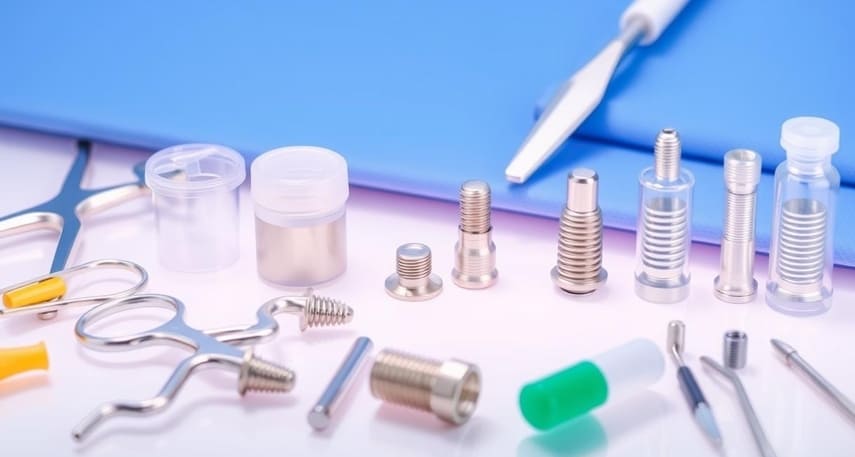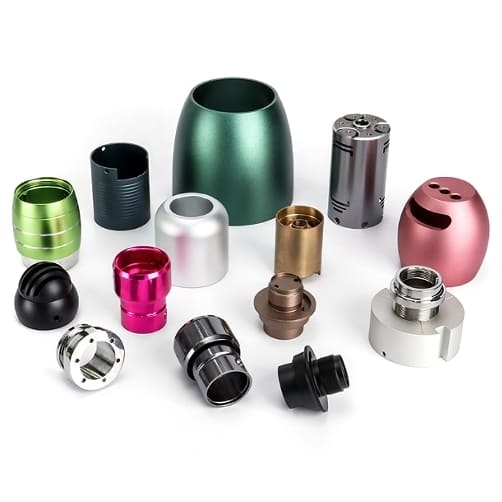
In the fast-paced and ever-evolving world of healthcare, precision and reliability are paramount. One technology that has revolutionized the medical sector by providing these qualities is Computer Numerical Control (CNC) machining. As a professional in the field, I’ve seen firsthand how CNC machining has transformed various aspects of medical manufacturing and patient care. Let’s dive into why CNC machining is so important for the medical industry, its applications, limitations, and the exciting future it holds.
Advantages of CNC Machining in the Medical Field
CNC machining has been a game-changer for the medical industry. Before its widespread adoption, medical devices and components were often crafted using manual processes, which could be time-consuming, less precise, and more prone to human error. CNC machining, on the other hand, uses computer-controlled machines to create parts with unparalleled accuracy and consistency.
Precision and Accuracy
One of the most critical aspects of medical manufacturing is precision. Medical devices and components must meet strict standards to ensure they function correctly and safely. This is where CNC machining shines. Unlike manual machining, which is prone to human error, CNC machines are programmed to follow exact specifications, ensuring that every part is consistent and accurate.
Benefits of Precision in Medical Devices
- Patient Safety: Precise parts reduce the risk of device failure, which is crucial in medical applications where lives are at stake.
- Operational Efficiency: When parts fit perfectly, there is less need for adjustments or rework, which speeds up the overall manufacturing process.
- Regulatory Compliance: Medical devices are subject to stringent regulations. Precision machining helps manufacturers meet these requirements consistently.
Customization and Flexibility
The medical industry is incredibly diverse, with a wide range of devices and components that serve different purposes. CNC machining offers the flexibility to produce custom parts with ease. Whether it’s a specialized implant or a one-of-a-kind surgical instrument, CNC machines can handle the job.
Examples of Customized Medical Devices
- Orthopedic Implants: These devices need to be tailored to the patient’s anatomy to ensure a perfect fit and optimal performance.
- Dental Crowns and Bridges: CNC machining allows for the creation of highly customized dental restorations, improving patient comfort and satisfaction.
- Surgical Instruments: Specialized tools often require unique designs that can only be achieved through precise CNC machining.
Enhanced Material Compatibility
Medical devices are made from a wide range of materials, including metals, plastics, and ceramics. CNC machining is versatile and can work with almost any material, making it an ideal choice for the medical industry.
Common Materials Used in Medical CNC Machining
- Stainless Steel: Known for its durability and resistance to corrosion, stainless steel is commonly used in surgical instruments and implants.
- Titanium: Lightweight and biocompatible, titanium is often used in orthopedic and dental implants.
- Plastics: Biocompatible plastics are used in a variety of medical devices, from syringes to diagnostic equipment.
- Ceramics: Known for their hardness and resistance to wear, ceramics are used in devices that require high durability.
Table: Material Properties and Applications in Medical CNC Machining
| Material | Properties | Common Applications |
|---|---|---|
| Stainless Steel | Durable, corrosion-resistant, easy to clean | Surgical instruments, implants |
| Titanium | Lightweight, strong, biocompatible | Orthopedic implants, dental implants |
| Plastics | Lightweight, biocompatible, cost-effective | Syringes, diagnostic equipment |
| Ceramics | Hard, wear-resistant, biocompatible | Wear-resistant components, implants |
Cost-Effectiveness and Time-Saving
While CNC machining can be a significant investment, the long-term benefits are undeniable. By automating the manufacturing process, CNC machines reduce labor costs and minimize waste. This cost-effectiveness is crucial in an industry where budget constraints are often a concern.
How CNC Machining Saves Costs
- Reduced Labor Costs: Automation reduces the need for manual labor, leading to lower production costs.
- Minimized Material Waste: Precise cutting and shaping reduce the amount of material wasted, saving money and reducing environmental impact.
- Faster Production: CNC machines can work continuously, speeding up the manufacturing process and reducing lead times.
Quality Control and Consistency
Quality control is paramount in the medical industry. CNC machining provides a high level of control over the manufacturing process, ensuring that each part meets the necessary specifications. This consistency is crucial for maintaining the reliability of medical devices.
Quality Control in CNC Machining
- Automated Inspection: Many CNC machines come equipped with inspection tools that can automatically check the dimensions and quality of each part.
- Traceability: CNC machines can record detailed logs of the manufacturing process, making it easier to trace any issues and ensure consistent quality.
- Repeatability: Once a program is set, CNC machines can produce identical parts time and time again, ensuring consistency in production.
Advancements in Technology
The medical industry is constantly evolving, and CNC machining is at the forefront of this innovation. New advancements in CNC technology, such as 5-axis machining and micro-machining, are pushing the boundaries of what is possible in medical manufacturing.
Key Technological Advancements
- 5-Axis Machining: This technology allows for the creation of complex, multi-dimensional parts in a single setup, reducing the need for multiple operations.
- Micro-Machining: This involves creating extremely small and intricate parts, which is essential for advanced medical devices like micro-sensors and miniature implants.
- Additive Manufacturing: While not traditional CNC machining, the integration of 3D printing and CNC processes is opening new possibilities for creating customized and complex medical devices.
Applications of CNC Machining in Medical Indusry

The versatility of CNC machining has led to its widespread use in various medical applications. Here are some key areas where CNC machining has made a significant impact:
Surgical Instruments
Surgical instruments are a prime example of CNC machining’s importance. These tools need to be sharp, durable, and perfectly shaped to perform delicate procedures. CNC machines can craft stainless steel, titanium, and other high-strength materials with the precision required for surgical instruments, ensuring they meet the highest standards of quality and safety.
Medical Implants
From hip replacements to dental crowns, medical implants require a high degree of customization and precision. CNC machining allows for the creation of implants that are tailored to individual patients, improving fit and function. For instance, 3D printing and CNC machining can be combined to produce complex geometries that mimic natural bone structures, enhancing patient comfort and reducing recovery times.
Diagnostic Equipment
Modern diagnostic equipment, such as MRI machines and CT scanners, relies on intricate components that must function flawlessly. CNC machining ensures that these components are manufactured to exact specifications, contributing to the reliability and accuracy of diagnostic results. This technology is also used to produce parts for smaller devices like blood glucose meters and wearable health monitors.
Pharmaceutical Machinery
The pharmaceutical industry also benefits from CNC machining. It is used to manufacture parts for machines that produce and package drugs, ensuring that these processes are precise and consistent. This is crucial for maintaining the quality and safety of medications.
Table: Common Medical Applications of CNC Machining
| Application | Materials Used | Benefits of CNC Machining |
|---|---|---|
| Surgical Instruments | Stainless steel, titanium | Increased precision, durability, and consistency |
| Medical Implants | Titanium, biocompatible polymers | Customization, improved fit and function, reduced recovery times |
| Diagnostic Equipment | Various metals, composites | Reliability, accuracy, and high-quality manufacturing |
| Pharmaceutical Machinery | Stainless steel, aluminum | Precision, consistency, and quality control in drug production |
Limitations of CNC Machining in the Medical Sector
While CNC machining has numerous advantages, it is not without its limitations. Understanding these constraints is essential for optimizing its use in the medical industry.
High Initial Costs
The upfront investment in CNC machines and software can be substantial. This can be a barrier for smaller medical facilities or startups. However, the long-term benefits, such as reduced production costs and increased efficiency, often outweigh the initial expenses.
Material Constraints
Not all materials are suitable for CNC machining. For example, some biocompatible materials used in medical devices may not withstand the high temperatures or pressures involved in the machining process. Additionally, certain materials may be difficult to machine, requiring specialized tools and expertise.
Skilled Labor Requirements
Operating CNC machines and programming them effectively requires skilled labor. Training employees to use these machines can be time-consuming and costly. However, the precision and efficiency gains often justify the investment in training.
The Future of CNC Machining in Medicine
The future of CNC machining in the medical industry looks promising. Advances in technology and materials are opening up new possibilities, and the integration of CNC with other manufacturing techniques is enhancing its capabilities.
Advanced Materials
New biocompatible materials are being developed that are better suited for CNC machining. For example, researchers are exploring the use of advanced polymers and composites that can be machined with high precision while maintaining their biocompatibility and durability.
Automation and Integration
The integration of CNC machining with automation and robotics is another exciting development. This can further reduce production times and costs while increasing the complexity of parts that can be manufactured. For instance, automated CNC systems can handle multiple tasks simultaneously, from cutting to finishing, reducing the need for manual intervention.
Smart Manufacturing
The concept of smart manufacturing, where CNC machines are connected to the internet and can be monitored and controlled remotely, is gaining traction. This allows for real-time data collection and analysis, enabling manufacturers to optimize their processes and reduce waste. It also improves traceability and quality control, which are critical in the medical industry.
FAQs
What is CNC machining?
CNC (Computer Numerical Control) machining is a manufacturing process that uses computer-controlled machines to remove material from a workpiece to create a desired shape or design. It is precise, efficient, and highly versatile, making it ideal for a wide range of applications, including medical device manufacturing.
How does CNC machining improve the accuracy of medical devices?
CNC machines use digital designs and precise control systems to ensure that parts are manufactured to exact specifications. This reduces the risk of human error and allows for the creation of components that are accurate to within microns, which is essential for medical devices that need to fit and function perfectly.
Are CNC machines cost-effective for medical manufacturing?
While the initial investment in CNC machines can be high, they offer long-term cost savings through increased efficiency, reduced production times, and the ability to handle complex and customized designs. The precision and reliability they provide can also reduce the need for rework and recalls, further saving costs.
What are the main materials used in CNC machining for medical devices?
Common materials used in CNC machining for medical devices include stainless steel, titanium, aluminum, and various biocompatible polymers. Each material has its own advantages and is chosen based on the specific requirements of the device or component.
Conclusion
CNC machining has had a profound impact on the medical industry, enhancing precision, efficiency, and customization. While there are some limitations, the benefits far outweigh the challenges. As technology continues to advance, the future of CNC machining in the medical sector is bright, promising even greater innovations and improvements in patient care.
